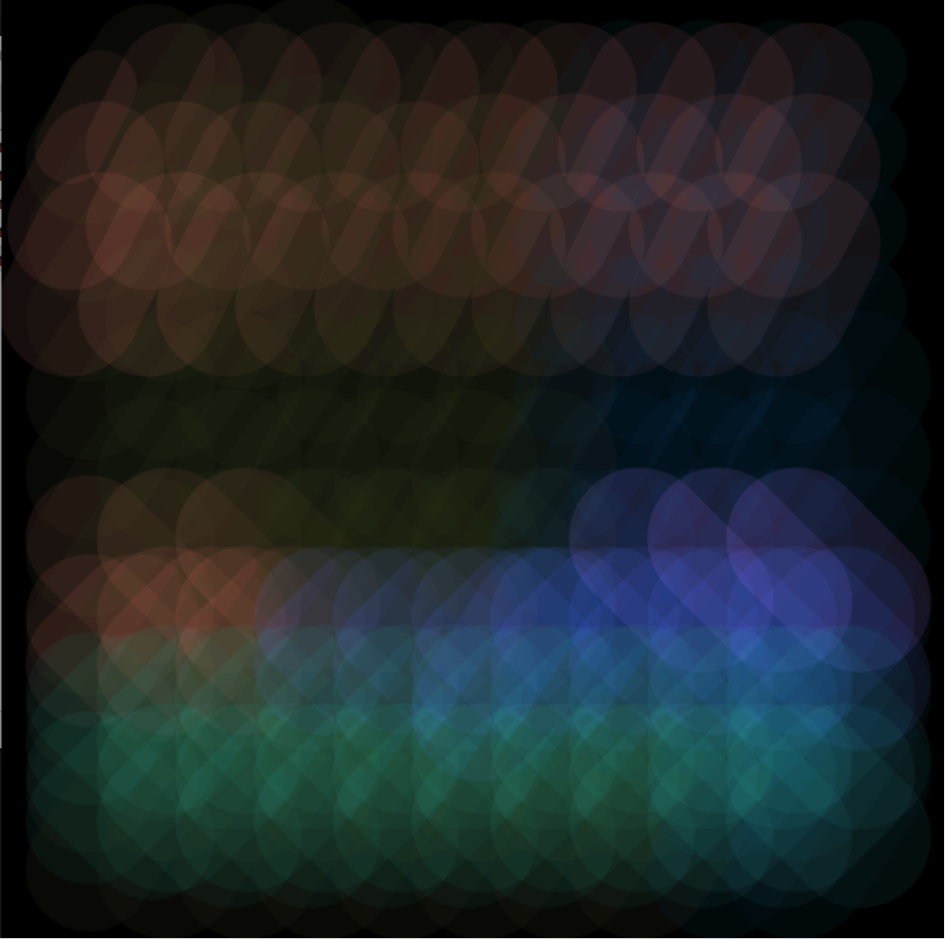
In a report, Hertlein compared the computer art on display and creators present at the 1975 International Conference of Computers and the Humanitites (ICCH) and what was displayed on the 1968 exhibition Cybernetic Serendipity. She uses the comparison to note some changes in computer art and its forums. In earlier exhibitions, such as the Cybernetic Serendipity show, the works were largely made by programmers and scientists. At the ICCH, there were mostly sculptors and artists present, people who were using the computer as primarily a designing aid.
At the end of this report, Hertlein states: “Whether the opportunities offered will be fully exploited depends upon the daring, the artfulness and the wisdom of those who use computers.
She seems to imply that computers offer many tools to the artists, and that they should be used for something further than only manipulation, that with the use of computers something new can be created, that it is not to simply be used as a manipulation of something already in existence. Computers has the potential to afford artists of many different mediums “further exploration of ideas that have been practices by experimental artists for years.” She expresses that it is up to artists to use computers in an innovative way, and to be brave in their doing so.
The following citation particularly resonates with me. Grace Hertlein is here making a greater statement about her position on the role of computers in the arts, which I will argue relates to my own experience of taking this class.
“It requires a deliberate and concerted effort to remain open-minded, and to appreciate varied approaches that are not in accord with one’s own temporary aesthetic parameters.”
I have not been blessed with some natural talent or inclination toward operating computers, or mathematics. But then again, who has? Although I do believe that some people’s brains might be more wired to get into and stick with computers or math, I also believe that the common aversion among artists toward using computers with curiosity is just as great if not greater a problem in this question.
Common methods of teaching math or computer science in early education might be the cause of many creative people’s feelings of hopelessness fore getting technical or frustration at even the topic of math. It might be because at some point a feeling of inadequacy or lack of access in a teaching context made a person think “I hate math” or to decide “I am really not a technical person.” This happens much in the same way that the hierarchical tendencies and fears which many people associate with PE classes might turn people away from sports or deter them from an active lifestyle for years, well into their adulthood.
Art From Code has been a place for me to face some fears or feelings of inadequacy toward math or computers. I see that all students found a balance based on their individual inclination/skill toward computers, math or art – and all learned to use the computer to make their art and to bring their initial ideas further.
I have found it highly informative to learn about the debate between computer artists and artists or scientists, and agree with Hertlein that experimental examples of computers being used for art is not something which should only be accessible to some elite, or only scientists and intellectuals but for the public at large. And I believe that this is a good thing to remember today, when the everyday life seems to be ruled by small and constantly present computers being used in very particular ways. I believe that the public can be empowered by examples of computers being used for something creative, displayed in for example free museums or the public arts.

The deliberation of the process of creating the initial bezier curve was necessary to generate a shape which I felt imitated a snapshot of a wave crashing in at the coast. Some images look more like the foam of a wave at the shore and some look more like the shimmering strobila or veins of deep water organisms floating in the dark ocean. The initial curve was the basis of my image, but I tried to let it disappear in the patterns I generated.
The images I ended up choosing as part of my final three were the ones that alluded the most to something I had seen in nature. I believe that the appearance of the images became softer and more alive as the image progressed, and that something more three-dimensional begun to happen on the canvas as some curves seem closer than others. The biggest challenge was using color to my benefit when the lines were so thin.




